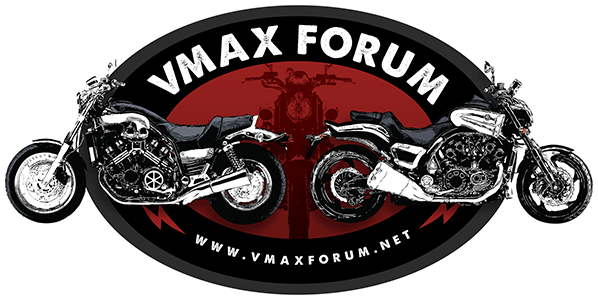SLS vs TLS
I'd heard that the SLS is a better 'hill-holder' than a TLS.
Grimeca and Fontana were high-end drum brakes.

There was a British guy who made drum brakes, Eddie Robinson, which had a good reputation (below). He began his production in the 1950's. This one appears to be a 4-shoe brake, but w/o a pic of the other side, who knows?

Giacomo Agostini, who knows something about high-performance bikes, continued to use TLS/4LS drum brakes after he could have switched to discs.
Then there was the Munch Mammut (Mammoth in English-speaking markets) with its TLS-drum brake, made of a special alloy. Colin Seeley made a 4LS drum brake. As you can see from the chart below, Suzuki also made a 4LS drum brake.
Here's a sheet on drum brakes specs:
Model OD x shoe width Swept area Radius x S.A.
Suzuki drum brakes
(square inches) braking coefficient
GT550/750 4LS (200mm) 7.81" x 1.0" wide (x 2) 49.07 191.6
T500 (1967) (200mm) 8.00" x 1.6" 40.21 160.8
T350 (1970) (180mm) 7.12" x 1.12" 25.06 89.21
X-5 Invader (160mm) 6.25" x 1.09" 21.4 66.87
Kawasaki drum brakes
H1R 4LS (250mm) 9.87" x .75" (x2) 46.53 229.74
H1 (1969) (200mm) 7.90" x 1.4" 34.74 137.22
A7SS (180mm) 7.00" x 1.2" 26.38 92.33
Yamaha drum brakes
XS-650 (1969) (200mm) 7.80" x 1.3" 31.85 124.2
YDS-6 (1967) (180mm) 7.02" x 1.17" 25.8 90.3
TD 3 (260mm) 10.29" x 1.06" (x2) 68.53 352.6
entire front wheel assy, inc. 19" alloy shoulderless rim (36 spoke), axle and
TT100 tyre and tube (and valve and cap!) is 18.5 kg.
Each brake backing plate assy: 2.25kg
Honda drum brakes
CB350 (1970) (180mm) 7.08" x 1.18" 26.24 92.91
CB175 (1971) (160mm) 6.20" x 1.18" 22.98 71.24
CB77/1968 CB450 (200mm) 7.88" x 1.18" 29.21 115.08
Bridgestone
350 GTR (190mm) 7.40" x 1.2" 27.89 103.20
175 (160mm) 6.20" x 1.18" 22.98 71.24
Bultaco drum brakes
250 Metralla (160mm) 6.30" x 1.6" 31.65 99.69
Ducati drum brakes
250 (180mm) 7.08" x ???
Bianchi
500 GP (230mm 4LS) 9.5" x 1.25" (2) 74.61 354.41
BSA
Gold Star (200mm SLS) 8.0" x 1.375" 34.60 138.42
Moto Morini
350 Sport (Grimeca 230mm Dual-SLS)
9.05" x 1.16" (2) 65.96 298.47
Munch
Mammut 2LS 10.0" x 2.0" 62.83 314.1
The Munch Mammut (Mammoth in English markets) was a hand-built ('bespoke' in the hipster tongue) bike designed and built in West Germany. It used a magnesium alloy which was used in aeronautical designs during WW II by the Luftwaffe. The engine was from a West German automobile the 1,000cc NSU TTS. The frame was a copy of the Norton Featherbed. The bikes were hand-built and because you could order it with a variety of options, it's probably safe to claim, "no-two were exactly-alike." I have pics of Friedl Munch at Daytona Bike Week, he came to the USA at the invitation of a Munch enthusiast who lived in so. FL, who was an acquaintance of mine. The front drum brake was Munch's design.
Munchs were at-first carbureted, and as they grew in displacement, they also were fuel injected. As-massive as they appear, they were actually light in weight, especially compared to a Harley-Davidson of similar or larger displacement. NSU besides the TTS air-cooled engine used in cars and motorcycles, was also the first European manufacturer to sell a rotary automobile, the RO 80. Another West German manufacturer, Hercules, was the first manufacturer to sell a Wankel-engined motorcycle (W2000). It was a single-rotor air-cooled design, with a bit of a resemblance in the engine to a jet airplane, due-to the cooling air intake. Then Suzuki released a much-larger displacement water-cooled 1-rotor rotary-engined motorcycle, the RE-5. Styling was courtesy of Giugiaro, who had and would continue to have success with automobiles, but his design for Suzuki was well, weird. An unusual list of components got styled to remind owners and observers that this engine didn't use pistons! Later models were more conventionally-styled. It lasted only two years.

Here's a pic of a Moto Morini which has an unusual design, it has two narrow, parallel SLS brake shoes instead of one wide one. The giveaway is the actuator arm on both sides of the drum. This is the famous
3-1/2 model which uses the Heron combustion chamber in the piston crown design, like the Jaguar XK-12 engine. One of my friends has one of these. He bought it from one of my co-workers, who bought it new.








![Bovemanx Motorcycle Phone Mount Holder, [150mph Wind Anti-Shake][7.2inch Big Phone Friendly] Bike Phone Holder, Motorcycle Handlebar Cell Phone Clamp, Compatible with iPhone 16 Pro Max Smartphones](https://m.media-amazon.com/images/I/51F+1sontPL._SL500_.jpg)



![Aomiker Motorcycle Phone Holder Mount - [Metal Extension Arm] [Dual Vibration Dampener] Motorcycle Cell Phone Mount, Bike Phone Handlebar Clamp for iPhone 16 15 14 13 Pro Max Plus, 4.7-6.7" Smartphone](https://m.media-amazon.com/images/I/51gU2g5VxgL._SL500_.jpg)
















![Lamicall Motorcycle Phone Mount Holder - [Dual Vibration Dampener] [720° Adjustment Arm] Motorcycle Cell Phone Holder, Bike Handlebar Phone Mount, for iPhone 16/15/ 14/13 Pro Max, 4.7-6.7" Phones](https://m.media-amazon.com/images/I/41g9IDInCIL._SL500_.jpg)








![JOYROOM Motorcycle Phone Mount, [1s Auto Lock][100mph Military Anti-Shake] Bike Phone Holder for Bicycle, [10s Quick Install] Handlebar Phone Mount, Compatible with iPhone, Samsung, All Cell Phone](https://m.media-amazon.com/images/I/5113ZNM8R8L._SL500_.jpg)







